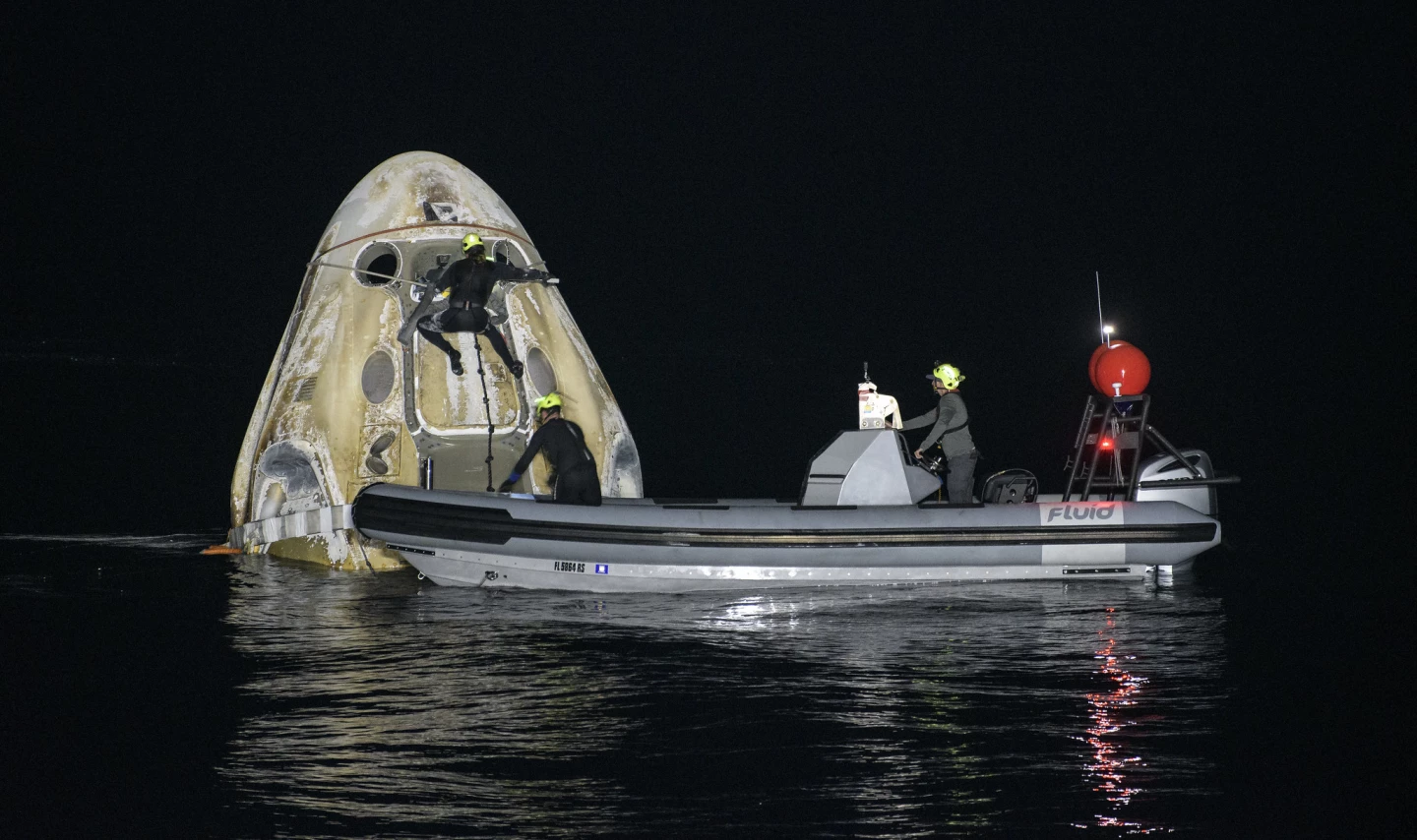SpaceX and NASA have rounded out their first commercial mission together with a successful splashdown of the Crew Dragon spacecraft with four astronauts onboard. The safe return of the capsule comes nearly six months after it first arrived at the International Space Station (ISS), setting a new record as the longest-duration mission for a crewed American spacecraft.
The Crew-1 mission lifted off last November as the first under NASA's Commercial Crew Program, which seeks to restore crewed launches to American soil and end a reliance on Russian-made spacecraft for access to the ISS.
The spacecraft carried NASA astronauts Michael Hopkins, Victor Glover, and Shannon Walker to the orbiting laboratory, along with Japan Aerospace Exploration Agency astronaut Soichi Noguchi. The crew remained aboard for 167 days and completed 2,688 orbits of Earth, setting a new mission duration record for an American crewed spacecraft, besting the previous record of 84 days set by the final Skylab crew in 1974.
During their time aboard the station, the crew participated in spacewalks, helped prepare the facility for upgrades, snapped pictures of Earth and carried out science experiments, including growing crops.
Then on Saturday May 1, they climbed inside the Crew Dragon capsule, named Resilience, which autonomously undocked from the ISS and set sail for home. This involved a series of departure burns to move clear of the station and the deployment of two drogue parachutes and four main parachutes after re-entry, bringing the capsule safely down to the waters off the cost of Florida in the early hours of Sunday.

This also marked the first night-time splashdown of an American crewed spacecraft since the return of Apollo 8 in 1968. The crew and capsule were quickly recovered, with the spacecraft to now undergo inspection and processing, and hopefully refurbishment for future missions.
“We’ve accomplished another incredible spaceflight for America and our commercial and international partners," says NASA Administrator Bill Nelson. "Safe, reliable transportation to the International Space Station is exactly the vision that NASA had when the agency embarked on the commercial crew program.”
The Crew-2 mission, meanwhile, lifted off on April 23 with four more astronauts onboard who are also set for an extended stint aboard the ISS, expected to last around six months.






